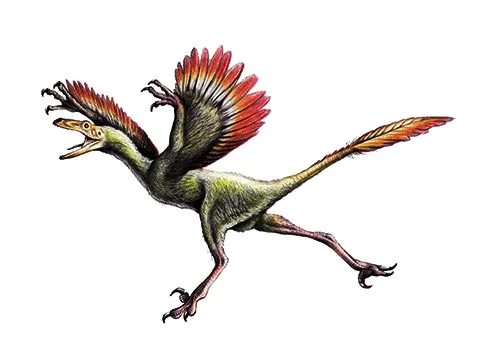Bambiraptor (Bambi thief)

Bam-bee-rap-tor
David Burnham, Kraig Derstler, Phil Currie, Robert Bakker, Zhou Zhonge & John Ostrom - 2000
Carnivore
Estimated 90cm long
Small Theropod
B. feinbergi (type)
USA, Montana, Glacier National Park - Two Medicine Foundation
Late Cretaceous, 84-71 million years ago
Bambiraptor Facts
Bambiraptor, meaning “Bambi thief” in Greek, was a small, agile dinosaur that measured approximately 1 meter in length and weighed only a few kilograms. Despite its small size, Bambiraptor was a formidable predator, with sharp, hooked claws on its hands and feet that would have enabled it to grasp and kill small prey with ease.
One of the most interesting things about Bambiraptor is its relationship to the larger, more famous dromaeosaurid dinosaurs like Velociraptor and Deinonychus. While these larger dromaeosaurids were fearsome predators in their own right, Bambiraptor provides a glimpse into the early evolution of this group of dinosaurs, and suggests that they may have been even more diverse and widespread than previously thought.
Bambiraptor is also of interest to paleontologists because of the well-preserved fossils that have been found. These fossils include not only bones, but also delicate, bird-like feathers that covered its body. This is significant because it provides direct evidence of the evolutionary relationship between dinosaurs and birds, and helps us understand the origin of feathers in the dinosaur family tree.
In conclusion, Bambiraptor is a fascinating dinosaur species that provides important insights into the evolution of dromaeosaurids and the origin of feathers in dinosaurs. Whether you’re a seasoned paleontologist or just starting to learn about dinosaurs, Bambiraptor is sure to captivate your imagination and inspire your interest in the field of paleontology.



